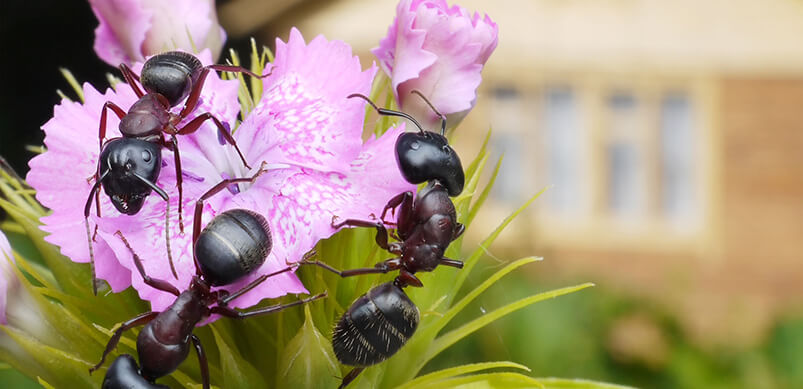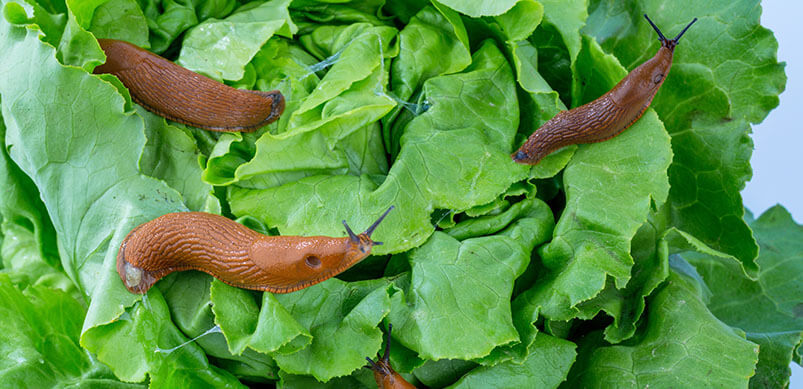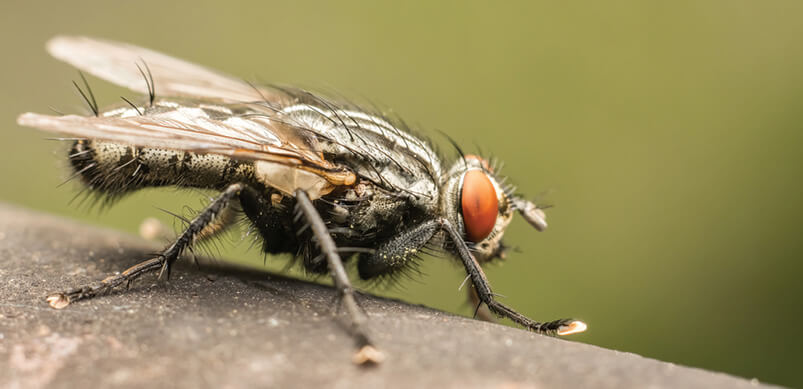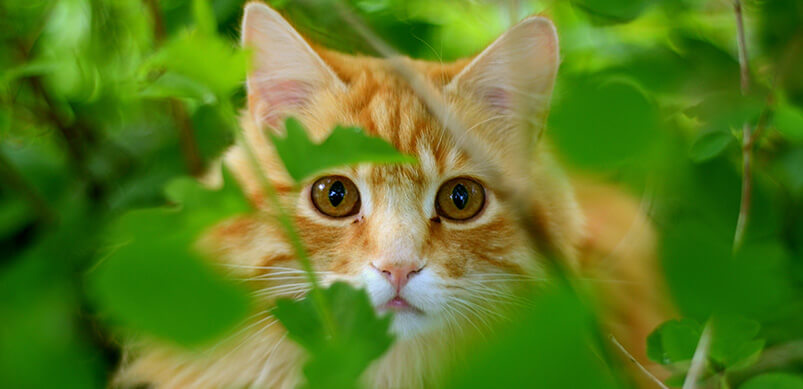
How to Rid Your Home and Garden of Unwanted Pests
July 4, 2022 | Gardening Tips | Household Advice | No comments
Nature is a beautiful thing, but it can also be very annoying and damaging – both to your greenery and the interior of your home when it finds its way inside! If your household or garden has been taken over by persistent pests and furry friends but you’re unsure how to get rid of them, we’ve got you covered.
Here’s a list of frequent unwanted guests and how to repel them. Your home will be your own again in no time!

Ants
Ants feed on plants and build nests which deprive flowers of water. They’re also common in homes, especially kitchens and storage areas, once they find out where the food is. Here are some tips on how to repel them.
- Starting with the most obvious choice, insect traps are ideal for stopping ants (and other similar creepy crawlies) in their tracks. A crawling insect trap should do just the trick for inside your home, and they are great for cockroaches, woodlice and the like too.
- Ants hate chalk! They struggle to crawl through it and get covered, so placing a line of chalk around your plant pots or pantry will keep them at bay in your garden.
- Ants use scent trails to remind themselves of the route to food. Place vinegar around your growth – greenery will interrupt these trails and they won’t find their way back to your plants!
- Natural substances including cinnamon sticks, chilli pepper, paprika, cloves and dried peppermint leaves are perfect for repelling ants. You can even squeeze lemon juice and leave the peel in their pathways. Garlic cloves work great for this too.

Slugs and Snails
Slugs and snails are slimy invaders that nobody wants lurking around their home or garden. There’s nothing worse than accidentally stepping in a snail trail! Fortunately, there are a number of well known ways to keep them at bay.
- Instead of the traditional method of using salt, which dehydrates and kills slugs, a friendlier choice is to repel them by placing mint, lemon balm or even human hair around your household or affected plants.
- Copper is also a great slug repellent. You can place copper pennies around the inside areas they’re sliming up, as well as bases of your outdoor plants – or, if you have a vegetable patch, you can buy copper tape to place around the edges.
- Using anti slug and snail tape is also a great and discreet deterrent for these unwanted guests. You can place it in any areas of your garden and it’s ideal for planted pots, tubs and pathways.

Wasps
Bees are one thing, but wasps are an enemy nobody wants to make. If you’re being bothered by these miniature winged demons, we’ve got a few tips for you.
- Essential oils in spray bottles can act as a deterrent. Simply spray the areas that wasps are gravitating towards, and they should steer clear.
- Getting close to wasps is certainly risky business. If you’d rather play it safe (something we certainly won’t blame you for!), wasp and flying insect traps are always an effective choice.

Grasshoppers
Although not as common as most garden pests, Grasshoppers can be prone to eating grass, shrubbery, leaves, bark, flowers and seeds. Nobody wants that kind of trouble, so here’s how you can prevent it.
- If you spot grasshoppers in your garden, a slight spray of garlic should repel them from your greenery. Talk about quick and easy!

Flies
Flies are a common household pest, and though they’re not as hostile as wasps or bees, they’re certainly no more welcome. There’s also a variety of them, including fruit flies, house flies and more. Here are some tips to get them to buzz off!
- Lavender, eucalyptus, peppermint and lemongrass deter flies, as they prefer smells such as apples and vinegar. Some essential oils in these scents should keep these flying pests away.
- Fly traps come in all different shapes and sizes, including more hanging traps or window stickers. These are particularly useful for catching, and last for up to two months too!

Moths
As pretty as some of them might be, moths can do plenty of damage to your home – especially your clothes and your pantry foods. Try some of these tips to keep them from gnawing holes in your property.
- Moths and other insects are repelled by the pheromones in cedar or lavender. Combining dried, crushed and powdered herbs and hanging them in bags around your home is a great way to repel them. you can also purchase lavender bags and cedarwood rings to place around your home.
- Depending what types of moths you have in your home, you can get specific traps to repel them. You may have pantry months in your kitchen cupboards or pantry, clothes moths in your wardrobe or codling moths and plum moths which are found in flower buds of apple and pear trees.

Silverfish
Most of us have seen a silverfish scuttling around our home at least once or twice, but it’s certainly not a sight you’ll ever get used to. Silverfish prefer humid and damp locations such as bathrooms and kitchens, so here’s a bit of advice to help you keep these unsightly pests away from such areas.
- For your kitchen, try keeping strong-smelling spices around. Silverfish hate spices such as cloves and cinnamon.
- If silverfish are in places you don’t fancy spicing up, however, trying laying down a silverfish trap. That’ll give your bathroom and kitchen an extra layer of silverfish protection!

Mice
Now let’s move onto larger, furrier invaders. Mice tend to eat a lot and can reproduce very quickly, so it’s important to sort the problem as soon as possible.
- Keep both your garden and home clean and make sure bins are sealed tightly. If possible, keep them as far away from your garden as you can.
- Mice hate peppermint, so if you grow a few peppermint plants around your garden, they won’t stick around for long!
- Be sure to block any holes in your walls to ensure they don’t make their way into your home.
- If you’re looking a trap, you can purchase smaller mouse traps or those that come pre-baited and ready to use.

Rabbits & moles
As cute as they are, rabbits will munch through your vegetable patch and moles will dig up plenty of holes in your garden on the hunt for food! So, here’s how to keep them at bay before they can distract you with their cuteness!
- Sprinkling chilli pepper around the plants will act as an effective deterrent for rabbits. Powdered red pepper works great for this too.
- Vinegar also helps to keep rabbits at bay. Trying soaking old corn-on-the-cobs in vinegar for a few minutes, them place them around the edges of your garden.
- Moles dislike plants with strong smells, so planting flowers such as daffodils, marigolds, and anything in the allium family should help to deter them.
- Humane and non-toxic mole repellents are also available to deter moles without causing harm to moles or yourself and your pets.

Cats
Although cats aren’t your usual garden pests, their litter and eating habits can soon damage your garden. They are also very clever, so you have to be extra sneaky with your repellent!
- Keep garden bins firmly sealed and remove any sources of shelter. Cats seek warm and dry spaces, so fence off your porch or decking area and keep your shed tightly closed.
- Install a motion sensing sprinkler. Cats hate water so they will stay away from your lawn if the sprinkler is on.
- Sprinkling pepper around your garden will make their paws spicy and they will soon work out it’s your garden that’s the culprit!
Now that you know how to clear your home and garden of pests, why not check out these top gardening tips to spruce up your garden for the summer months!
Tags: Garden Care, Pest Control

